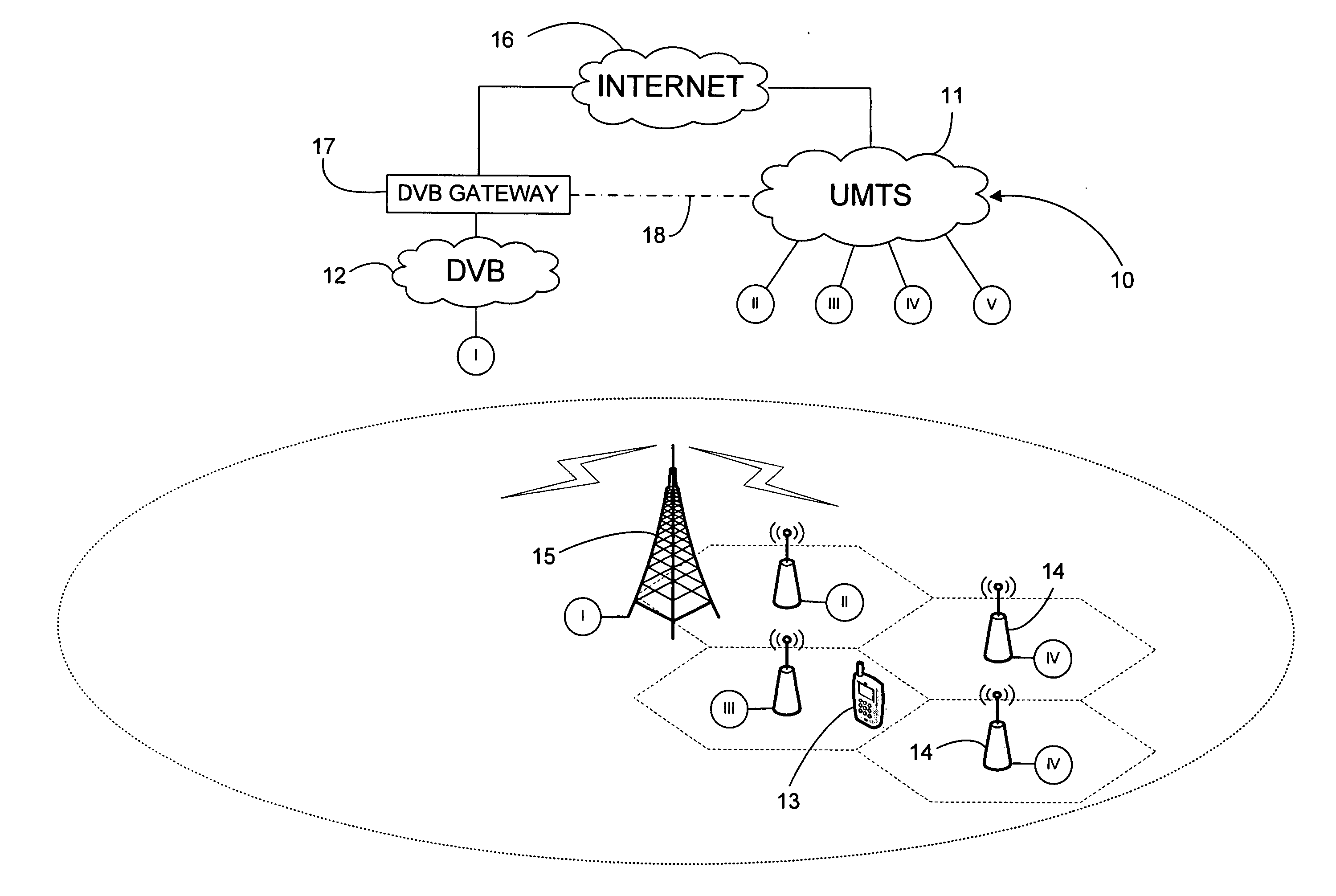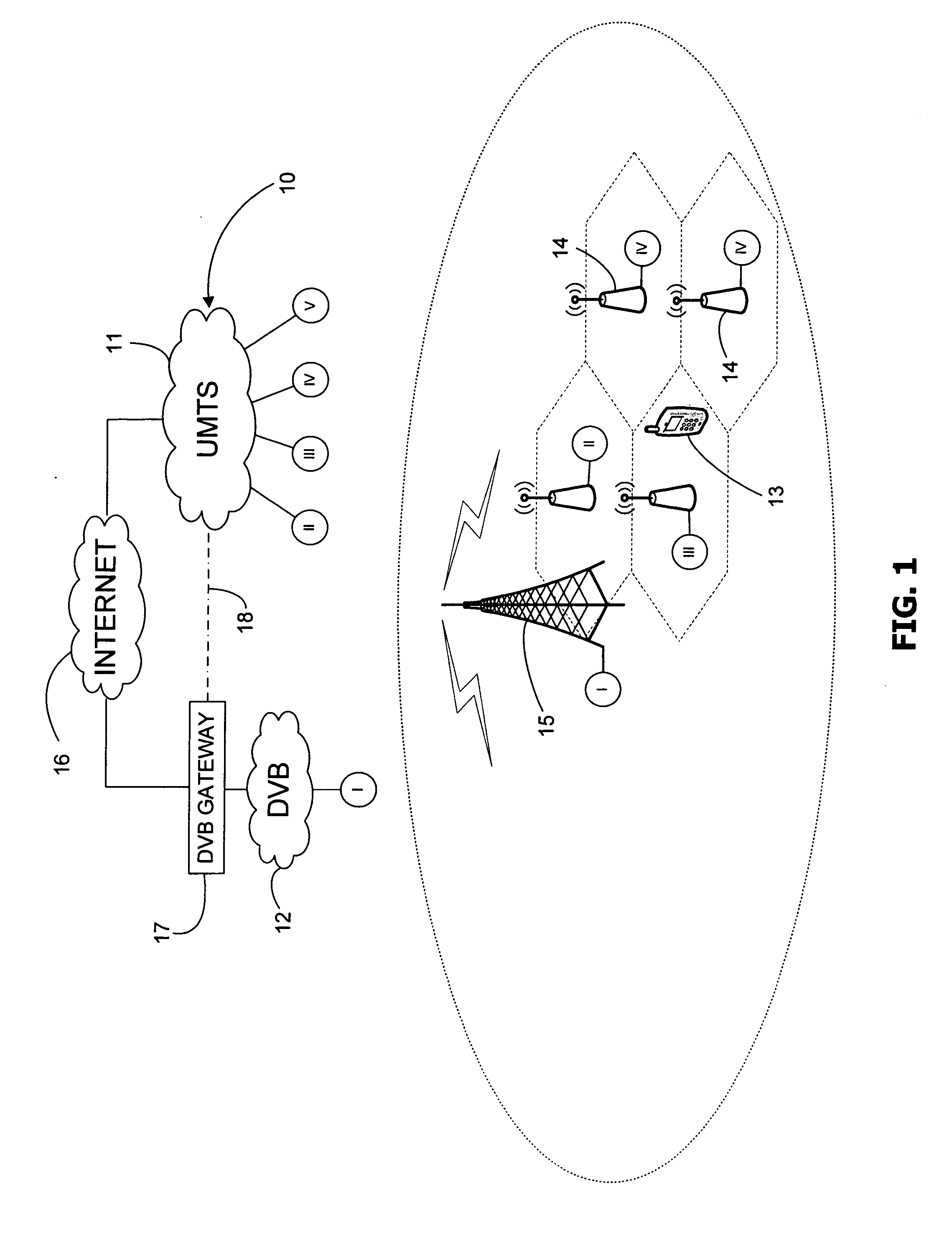Method of providing access to packet-switched services in a heterogeneous network environment
- Summary
- Abstract
- Description
- Claims
- Application Information
AI Technical Summary
Benefits of technology
Problems solved by technology
Method used
Image
Examples
Embodiment Construction
[0070] Referring to FIG. 1 a heterogeneous network generally identified by reference numeral 10 comprises a bi-directional network which in this case is a cellular network 11 (e.g. UMTS) and a uni-directional network which in this case is a broadcast network 12 (e.g. DVB). Each of the two networks 11, 12 is under a different administrative domain and they are heterogeneous i.e. the protocols for access, transmission and handling of data may differ between the networks. A Multi-mode Mobile Terminal (MMT) 13 has interfaces (or a single re-configurable interface) for accessing both of the networks 11, 12, although the Home Network of the MMT 13 (i.e. that network responsible for AAA, roaming etc.) is the cellular network 11. The cellular network 11 provides access for the MMT 13 to packet-switched services over a wireless link via a UMTS radio access network (not shown) comprising a series of base stations (or Node Bs) 14. A dashed line shows the area of coverage provided by each base ...
PUM
 Login to View More
Login to View More Abstract
Description
Claims
Application Information
 Login to View More
Login to View More - R&D
- Intellectual Property
- Life Sciences
- Materials
- Tech Scout
- Unparalleled Data Quality
- Higher Quality Content
- 60% Fewer Hallucinations
Browse by: Latest US Patents, China's latest patents, Technical Efficacy Thesaurus, Application Domain, Technology Topic, Popular Technical Reports.
© 2025 PatSnap. All rights reserved.Legal|Privacy policy|Modern Slavery Act Transparency Statement|Sitemap|About US| Contact US: help@patsnap.com



